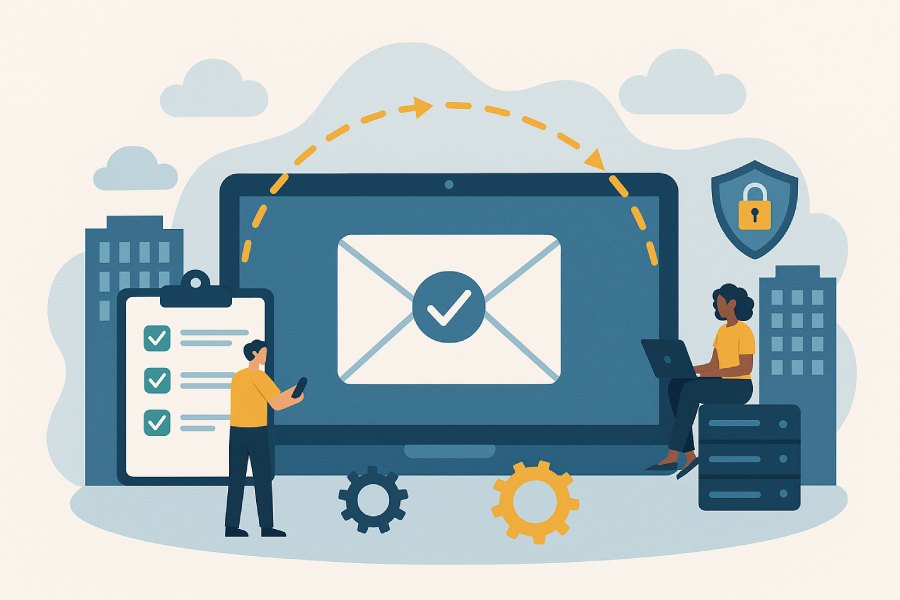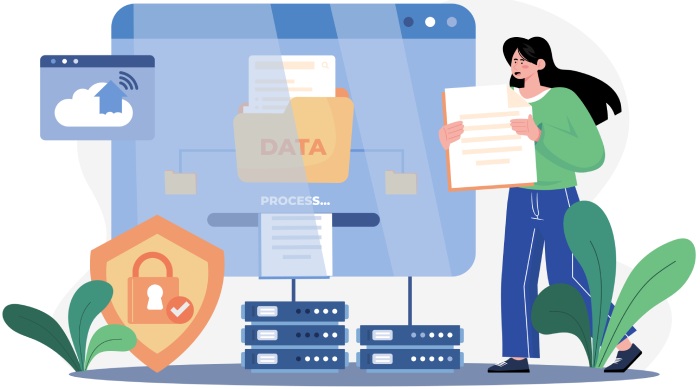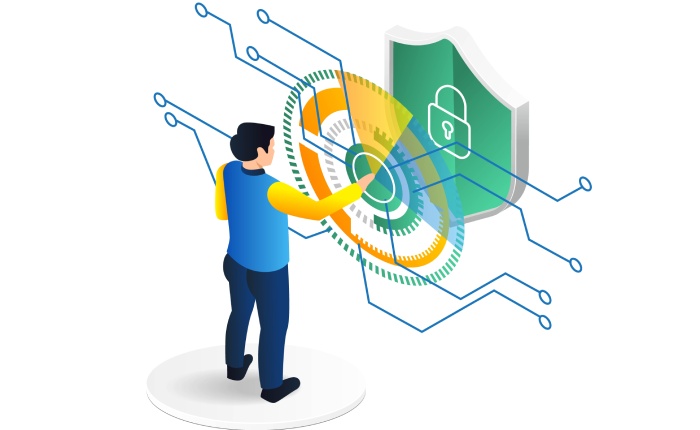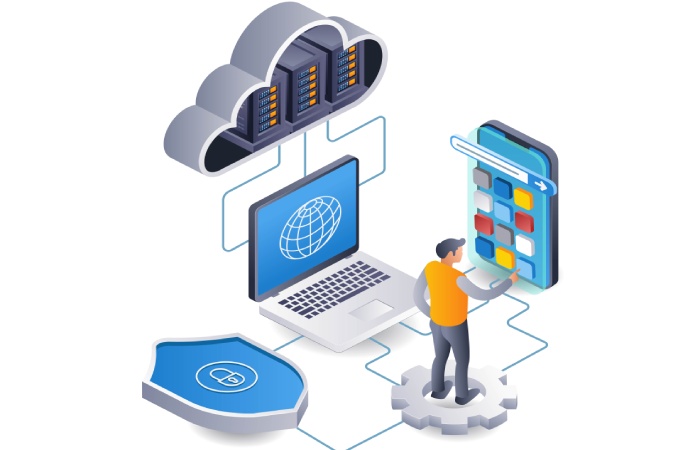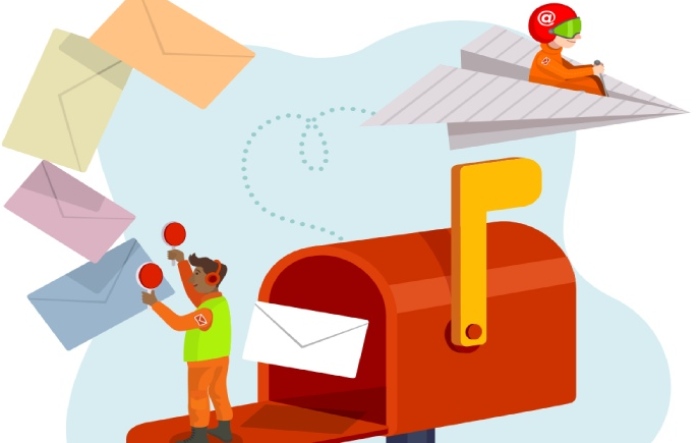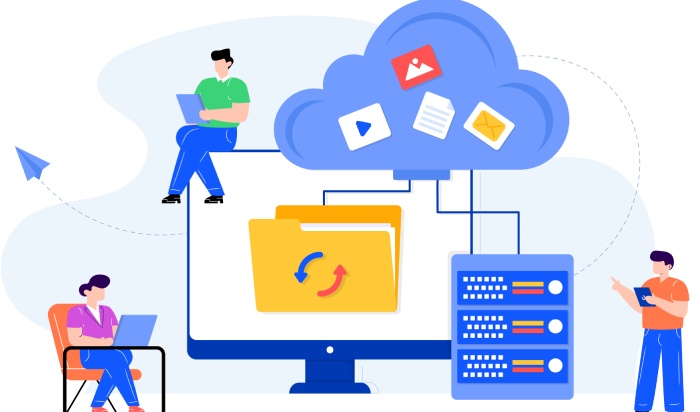Cross tenant mailbox migration is a specialized form of tenant to tenant migration within Microsoft 365 environments, involving the transfer of mailboxes, shared mailboxes, public folders, and associated mailbox data between separate Office 365 tenants. This process is critical in multi-tenant environments where enterprises operate multiple Microsoft Exchange Online tenants, often due to mergers, acquisitions, divestitures, or organizational restructuring.
Unlike standard Office 365 migration, cross-organization mailbox migration presents unique challenges related to tenant isolation, mail routing, and user identity mapping. The migration encompasses end-to-end email data transfer including mailbox export, mailbox import, and mailbox replication — often executed through Exchange Admin Center, Exchange Web Services (EWS), Microsoft Graph API, or PowerShell migration scripts. Given Exchange Server’s evolving hybrid deployment capabilities, cross tenant migration strategies must accommodate both cloud mail migration and on-premises components to ensure seamless mailbox synchronization and mail flow continuity.
Notable tools from vendors such as BitTitan, Quest Software (including Binary Tree), SkyKick, AvePoint, and CodeTwo simplify the complex workflows with features like migration endpoint configuration, migration batch management, migration throttling controls, and robust migration error handling. These solutions facilitate comprehensive migration planning, monitoring, and data integrity assurance across the migration lifecycle.
Key Reasons for Cross Tenant Migrations in Enterprises
Enterprises often pursue cross tenant mailbox migration for several strategic reasons:
- Mergers and Acquisitions (M&A): Large organizations such as Meta (Facebook) or IBM may need to consolidate multiple Microsoft 365 tenants into a single tenant to streamline mail routing, provisioning mailboxes, and enforce unified data loss prevention (DLP) policies.
- Divestitures or Spin-Offs: Separating business units into distinct tenants requires cross-domain migration of mailboxes without disrupting service-level agreements or mail flow.
- Cloud Service Migration and Modernization: Organizations migrating legacy Exchange Server environments to Exchange Online may need cross-tenant mailbox synchronization as they transition mailboxes to new tenants provisioned in Azure AD.
- Compliance and Tenant Isolation: Enterprises manage compliance considerations by isolating tenants according to geographical regulations or data residency mandates, necessitating secure data transfer and tenant to tenant email migration.
- Organizational Restructuring: Enterprises like Cisco Systems or Atlassian leverage cross tenant mailbox migration to realign user identity mapping and delegated access transfer during business unit realignments.
Pre-Migration Assessment and Planning
Effective cross tenant migration begins with meticulous migration planning, focusing on both technical and organizational prerequisites to mitigate risks related to data loss or downtime.
- Inventory and Assessment: Utilize data migration tools from vendors such as TransVault, Veeam, or Veritas Technologies to perform mailbox export and identify email archiving requirements. Discovery should include shared mailbox migration, public folder migration, and identify mailboxes requiring delegated access transfer.
- Migration Endpoint and Credential Setup: Define migration endpoints in Exchange Admin Center, managing migration credentials for secure authentication during mailbox import and export.
- Mailbox Size and Batch Planning: Account for migration throttling imposed by Microsoft Exchange Online, creating migration batches that optimize migration scalability and throughput.
- Mail Flow and SMTP Migration: Plan mail routing strategies to guarantee uninterrupted mail flow, considering temporary SMTP migration configurations.
- Backup and Data Integrity: Employ backup solutions from Carbonite or Mimecast to protect against data loss, ensuring data encryption and secure data transfer throughout the process.
- Compliance Checks: Incorporate compliance considerations into the migration plan, coordinating with compliance tools from Proofpoint or Okta to enforce data loss prevention and governance policies.
Identifying Source and Destination Tenant Requirements
Thorough analysis of source and destination tenants is pivotal:
- Tenant Capabilities: Evaluate the features of source tenant (e.g., Microsoft Exchange Online or hybrid Exchange Server deployment) and the destination tenant within Microsoft 365 multi-tenant environments.
- Azure AD Migration: Synchronize user identities using Azure AD migration tools, ensuring smooth user identity mapping which supports access to mailboxes and shared resources post-migration.
- Provisioning Mailboxes: Provision mailboxes, shared mailboxes, and public folders in the destination tenant ahead of migration using Exchange PowerShell migration scripts or third-party migration tools to minimize post-migration user disruption.
- Resource and License Alignment: Confirm available licenses such as Exchange Online Plan 2, verify resource quotas, and address tenant isolation policies to avoid conflicts.
- Service-Level Agreement (SLA): Establish clear SLA boundaries with cloud providers—whether Microsoft, AWS, or Google Cloud Platform—to align on migration timelines, service availability, and escalation procedures.
Data Security and Compliance Considerations
Security and compliance remain paramount during tenant migration:
- Data Encryption: Ensure encryption is leveraged for both data at rest and in transit. Many third-party migration tools like Cloudiway or On Demand Migration incorporate built-in encryption protocols.
- Secure Data Transfer: Adopt secure channels such as TLS for SMTP migration and authenticated APIs like Microsoft Graph API to safeguard email data transfer.
- Compliance Auditing: Record all mailbox synchronization activities to allow for auditing and compliance validation post-migration.
- Data Loss Prevention (DLP): Extend existing DLP policies across tenants to prevent accidental exposure or leakage of sensitive corporate data.
- Migration Monitoring: Use migration monitoring capabilities available in Exchange Admin Center or third-party dashboards to track migration progress, detect migration errors promptly, and maintain data integrity.
- Mailbox Cleanup: Before migration, enforce mailbox cleanup to remove obsolete data, reducing migration time and cost. This helps meet compliance retention policies and improves overall performance.
- Delegated Access Transfer: Safeguard delegated permissions during mailbox migration, especially for shared mailboxes, to maintain continuity of collaborative workflows.
In sum, successful cross tenant mailbox migration demands a comprehensive strategy involving rigorous planning, adherence to compliance mandates, leveraging sophisticated data migration tools, and partnering with proven vendors. Enterprises navigating complex Microsoft 365 multi-tenant landscapes must balance performance, scalability, and secure data handling to ensure seamless cloud service migration outcomes.
Choosing the Right Migration Approach: Cutover, Staged, or Hybrid
Selecting the appropriate migration strategy is fundamental in ensuring a successful Office 365 migration or Microsoft Exchange migration. The choice between a cutover, staged, or hybrid deployment hinges on organizational size, complexity, and business continuity requirements.
- Cutover Migration is typically utilized for small organizations with fewer than 2,000 mailboxes. This approach involves migrating all mailboxes in a single, swift migration batch, minimizing the duration but increasing the reliance on migration throttling controls and migration monitoring to maintain data integrity and reduce errors. Cutover is ideal when the tenant to tenant migration can be performed with minimal disruption, leveraging mailbox export and mailbox import mechanisms through PowerShell migration scripts or Exchange Admin Center’s native tools.
- Staged Migration suits medium-sized enterprises with thousands of mailboxes. It chunkily migrates mailboxes in batches over time, utilizing migration endpoints and migration credentials authenticated via Azure AD migration configurations. This approach supports mailbox synchronization and mailbox replication processes, allowing coexistence between on-premises Exchange Server and Exchange Online environments within a multi-tenant environment. Hybrid deployment strategies blend staged migration benefits with minimal mail flow downtime, ensuring secure data transfer and preserving mailbox cleanup tasks during the transition.
- Hybrid Deployment offers a seamless, long-term coexistence between Exchange Server on-premises and Exchange Online. Hybrid is especially useful for organizations that require a gradual move across multiple tenants, allowing for cross-organization mailbox migration, delegated access transfer, and public folder migration with complex compliance considerations. Hybrid configurations rely heavily on Exchange Web Services (EWS) and Microsoft Graph API for mailbox synchronization and mail routing, maintaining tenant isolation and service-level agreement commitments. This requires advanced migration planning to mitigate migration throttling and error handling concerns.
Utilizing Microsoft Native Tools for Cross Tenant Migration
Microsoft provides several native tools that facilitate tenant to tenant migration within the Office 365 migration framework. The Exchange Admin Center is the primary console for initiating and managing mailbox export, mailbox import, and migration batch tasks. These tools support SMTP migration and enable mailbox synchronization using Exchange Online PowerShell commands, granting administrators granular control over mail flow and mailbox replication.
Azure AD migration plays a pivotal role in user identity mapping and provisioning mailboxes, ensuring authentication continuity across tenants. Administrators can automate migration credential mapping to maintain seamless user access with minimal disruption. For organizations operating in a hybrid deployment or multi-tenant environment, native tools allow partial migrations with real-time migration monitoring, data loss prevention, and migration error handling to maintain data integrity.
While native Microsoft tools excel in standard tenant to tenant migration scenarios, they often necessitate substantial manual oversight, particularly during complex public folder migration, shared mailbox migration, or delegated access transfer activities. Migration throttling and batch size limitations may also impose scalability bottlenecks, affecting larger cloud mail migration projects.
Leveraging Third-Party Migration Tools and Solutions
To overcome the challenges associated with Microsoft native tools, many enterprises adopt third-party migration tools from established vendors such as BitTitan, Quest Software (with its Binary Tree technology), AvePoint, and SkyKick. These data migration tools enhance migration scalability, streamline migration planning, and automate complex cross-domain migration tasks.
Third-party solutions facilitate comprehensive Microsoft Exchange Online migrations, supporting nuanced scenarios like tenant isolation in multi-tenant environments and hybrid deployment coexistence. They provide advanced features such as granular mailbox cleanup, delegated access transfer, public folder migration, and robust email archiving capabilities to comply with stringent compliance considerations.
For hybrid and multi-cloud environments, vendors like Cloudiway and TransVault offer secure data transfer with extensive migration monitoring dashboards, supporting data encryption and mitigating migration throttling errors. These solutions often integrate with Azure AD migration services, utilizing PowerShell migration scripts and Microsoft Graph API to automate mailbox export and import processes.
Additionally, some third-party tools facilitate migrations beyond Microsoft ecosystems, supporting Google Workspace and other cloud service migration needs. Vendors like CodeTwo and On Demand Migration cater to organizations transitioning from Google Cloud Platform or hybrid deployments involving Amazon Web Services (AWS), thereby ensuring seamless cross-organization mailbox migration with optimized mail routing.
Managing User Identity and Authentication During Migration
User identity management is central to securely executing tenant migrations, especially in scenarios involving tenant to tenant migration or cross-domain migration. Accurate user identity mapping between source and target tenants ensures continuous user authentication and prevents mailbox access interruptions.
Azure AD migration tools and services offer seamless synchronization of user objects and security groups across tenants. Leveraging Microsoft Graph API and Exchange Web Services (EWS), administrators can provision mailboxes and automate mailbox synchronization aligned with existing tenant permissions.
In complex hybrid deployments, integration with identity providers such as Okta enhances single sign-on (SSO) capabilities, bolstering security and compliance considerations while maintaining robust data loss prevention controls. PowerShell migration scripts commonly automate user provisioning and delegated access transfer, ensuring that mailbox permissions remain intact post-migration.
To mitigate risks of data corruption or loss, migration planning must incorporate secure data transfer protocols and validate migration credentials regularly. Additionally, migration throttling policies require consideration to avoid overloading authentication services during resource-intensive mailbox replication and email data transfer processes.
Handling Mailbox Permissions and Shared Mailboxes
Maintaining mailbox permissions integrity is critical during Microsoft Exchange migration and tenant migration. Shared mailbox migration requires careful handling of delegated access transfer to preserve end-user collaboration capabilities across Exchange Online environments.
Both native and third-party tools provide mechanisms to migrate shared mailbox permissions alongside mailbox content. Public folder migration also demands specialized handling to retain folder hierarchy and access rights, often leveraging Exchange Web Services (EWS) APIs and PowerShell scripts tailored for multi-tenant environments.
Migration batches must be configured to include mailbox cleanup routines post-migration to remove obsolete permissions and prevent security vulnerabilities. Vendors such as Quest Software and BitTitan offer built-in functionality to automate permission migration, reducing manual intervention and minimizing migration errors.
Adherence to compliance considerations is vital, especially during cross-organization mailbox migration, to ensure delegated access transfer complies with data protection policies while retaining audit trails as part of migration monitoring efforts.
Addressing Mail Flow and Namespace Issues
Optimizing mail flow during tenant to tenant and Microsoft Exchange Online migrations is a complex but indispensable aspect of migration planning. SMTP migration and mail routing must be carefully orchestrated to prevent email delivery disruptions, particularly in hybrid deployments and multi-tenant environments.
Namespace configuration involves updating DNS records, SPF, DKIM, and DMARC policies to align with the target tenant’s mail infrastructure. Effective mail routing strategies minimize downtime by leveraging migration endpoints and migrating mailboxes in controlled batches with fallback mail flow options enabled. Cloud mail migration tools from providers such as Mimecast, Barracuda Networks, and Carbonite include features to streamline mail routing changes securely.
During migration, migration throttling can be managed using granular service-level agreement parameters, ensuring mail flow continuity and secure data transfer with data encryption in transit. It’s paramount that migration monitoring includes real-time alerts for mail delivery failures and migration error handling protocols to promptly manage any disruptions.
To support compliance considerations, data loss prevention policies should be harmonized between source and target tenants prior to migration. This alignment helps avoid mail flow issues related to content filtering and prevents unnecessary mailbox replication delays due to policy enforcement.
Incorporating these considerations and leveraging a combination of native Microsoft tools along with trusted third-party migration solutions, organizations can orchestrate effective tenant migrations, maintaining service continuity, data integrity, and security throughout the cloud service migration journey.
Post-Migration Validation and Troubleshooting
Ensuring the success of an email migration, particularly a complex tenant migration or tenant to tenant migration involving Exchange Online or Microsoft Exchange Server, hinges on comprehensive post-migration validation and prompt troubleshooting. Once the mailbox replication and email data transfer processes conclude, IT teams must utilize migration monitoring tools integrated within the Exchange Admin Center or third-party software such as Quest Software’s Binary Tree, BitTitan, or SkyKick to verify migration batch statuses and migration endpoint connectivity. Validation efforts should focus first on confirming data integrity—ensuring email archiving, public folder migration, shared mailbox migration, and delegated access transfers preserve all metadata and permissions correctly.
Troubleshooting migration errors often revolves around addressing migration throttling issues, migration credential mismatches, and mailbox synchronization failures. Tools that employ PowerShell migration scripts can automate remediation processes, such as reapplying mailbox import/export commands or adjusting mail routing settings in hybrid deployment environments. Additionally, use Microsoft Graph API for granular auditing of mailbox activities post-migration to detect data anomalies or compliance gaps. Organizations should also verify Azure AD migration has propagated user identity mapping successfully to avoid authentication hurdles. In cases of SMTP migration complexities, inspecting mail flow configurations between the source and target tenants ensures seamless email delivery without data loss or interruption.
Strategies for Minimizing Downtime and User Disruption
Minimizing downtime and user disruption during an Office 365 migration or cloud mail migration requires meticulous migration planning, including the segmentation of mailboxes into manageable migration batches. Employing migration throttling controls enables administrators to balance speed with network and server capacity to prevent service degradation. Hybrid deployment architectures can facilitate coexistence between legacy Exchange Server environments and Exchange Online, enabling a gradual migration approach that reduces operational impact.
Leveraging staged mailbox synchronization, which allows continuous mailbox replication before the final cutover, ensures minimal data does not get lost during transition. Furthermore, SMTP migration and mail routing adjustments must be coordinated to avoid mail loss and maintain seamless service during DNS propagation delays. Vendors like AvePoint and CodeTwo provide specialized data migration tools for cross-organization mailbox migration that optimize bandwidth utilization and ensure secure data transfer through encryption protocols, thereby adhering to compliance considerations.
To tackle tenant isolation and service-level agreement (SLA) constraints, utilizing multi-tenant environment capabilities within Microsoft Exchange Online or Google Workspace helps prevent tenant overlap and enforces boundaries that preserve security policies. Collaboration with cloud service providers such as Amazon Web Services (AWS) or Google Cloud Platform for backend infrastructure can also facilitate migration scalability.
Best Practices for Communication and Training During Migration
Effective user communication and training are pivotal in reducing friction during cloud service migration or cross-domain migration projects. Establishing clear communication channels, such as integrating collaboration platforms from Slack Technologies or Atlassian, helps disseminate real-time updates about migration schedules, expected downtime, and new functionalities after migration. Regular newsletters, webinars, and dedicated help desks staffed by migration experts can aid user adaptation.
From a training perspective, organizations should focus on familiarizing users with Exchange Online interfaces, Outlook Web Access functionality, and mailbox cleanup best practices that improve user experience. Highlighting changes in delegated access transfer procedures and shared mailbox management supports smoother daily operations post-migration. IT administrators should also provide training on reporting migration errors and leveraging self-service tools linked to Microsoft Graph API or Exchange Web Services (EWS) for mailbox export/import tasks, further empowering end-users to participate in the migration success.
DuoCircle offers reliable and effective strategies for migrating mailboxes across different tenants for enterprise users of Microsoft 365, guaranteeing uninterrupted email service and minimal interference throughout the tenant transition process.
Case Studies and Real-World Examples of Successful Cross Tenant Migrations
Several industry leaders and large enterprises have documented exemplary tenant to tenant migrations showcasing best practices and real-world challenges overcome. For instance, Meta (Facebook) successfully implemented a Microsoft Exchange migration across multiple subsidiaries by utilizing data migration tools from Cloudiway combined with advanced Azure AD migration techniques, achieving near-zero downtime and robust data loss prevention.
Dell Technologies partnered with Quest Software to execute a complex tenant migration involving hybrid deployment with legacy Exchange Server environments, employing migration batch scheduling and migration endpoint optimization to handle migration throttling and maintain service-level agreements. Their approach included public folder migration and delegated access transfer automation, significantly reducing manual errors.
Another notable example is IBM’s email migration from Google Workspace to Office 365 migration, where they relied heavily on SMTP migration with enhanced mail routing configurations and robust compliance considerations ensured by Veritas Technologies’ email archiving solutions. Their commitment to extensive migration monitoring and error handling ensured the project met its timelines without compromising data integrity.
Such success stories often leverage a combination of Microsoft Exchange Online native tools, third-party migration tools like BitTitan and On Demand Migration, and backup solutions from Veeam or Carbonite to guarantee secure data transfer and efficient mailbox synchronization across multi-tenant environments.
FAQs
What is the difference between tenant migration and tenant to tenant migration?
Tenant migration typically refers to moving data within the same cloud or service provider, while tenant to tenant migration denotes transferring mailboxes and associated data between two distinct tenants or organizations, often in Office 365 or Exchange Online environments.
How can downtime be minimized during an Office 365 migration?
Downtime is minimized by implementing migration batches, staged mailbox synchronization, hybrid deployments, and migration throttling techniques. These approaches ensure continuous mailbox replication and staggered cutovers that reduce user impact.
What are common migration errors in cross-organization mailbox migration?
Typical errors include migration throttling, credential mismatches, permission replication failures, and mail flow disruptions. Using migration monitoring tools and PowerShell migration scripts aids in rapid detection and remediation.
Which third-party migration tools are recommended for tenant migration?
Popular tools include Quest Software’s Binary Tree, BitTitan, SkyKick, AvePoint, Cloudiway, and On Demand Migration. These tools offer scalability, error handling, and secure data transfer features optimized for tenant migrations.
How important is user identity mapping in tenant migrations?
User identity mapping is critical for ensuring that mailbox data and permissions align correctly in the target tenant, preventing authentication issues and ensuring smooth delegation and access rights transfer.
What role does compliance play in a Microsoft Exchange migration?
Compliance considerations guide secure data transfer, data encryption, and email archiving practices to meet regulatory requirements, often involving partners like Mimecast or Proofpoint for enhanced data loss prevention.
Key Takeaways
- Post-migration validation focusing on data integrity, mailbox synchronization, and error handling is essential for a successful tenant migration.
- Minimizing downtime involves staged mailbox replication, hybrid deployments, and efficient mail routing strategies.
- Clear communication and thorough user training facilitate smoother adoption of new cloud mail migration environments.
- Leveraging advanced tools from vendors such as Quest Software, BitTitan, and Cloudiway, coupled with Microsoft native services, enhances migration scalability and compliance.
- Real-world case studies demonstrate the importance of detailed migration planning, secure data transfer, and proactive error management in achieving successful cross-tenant migrations.
